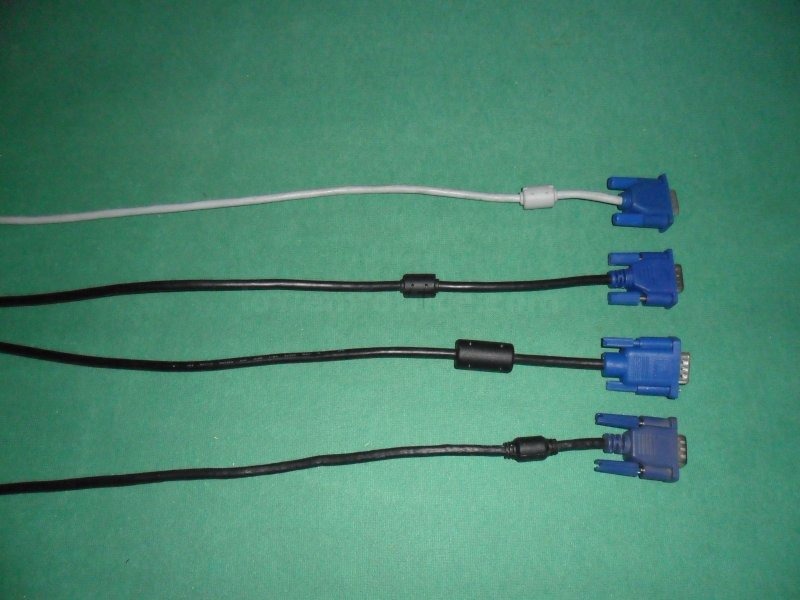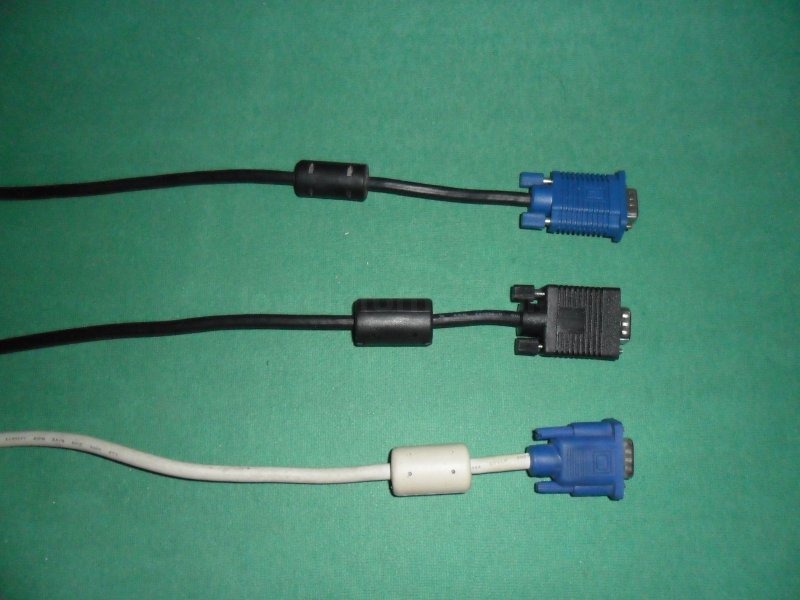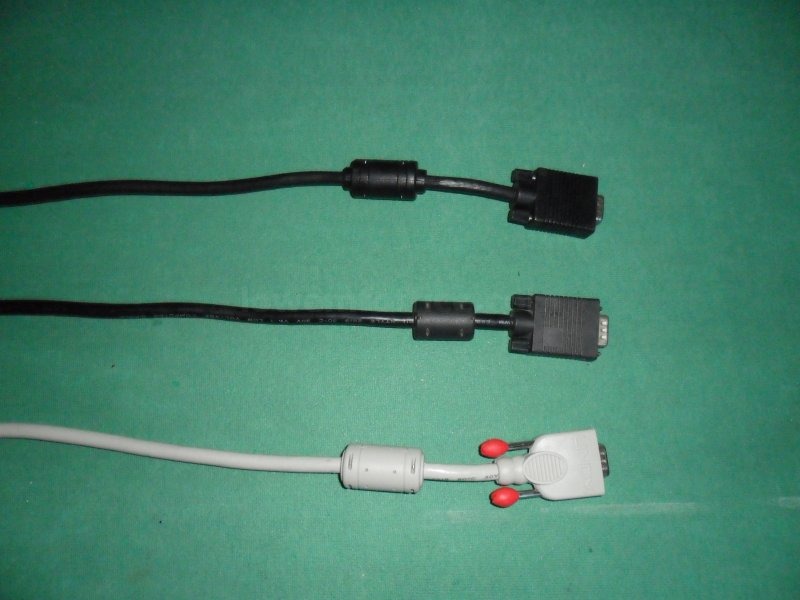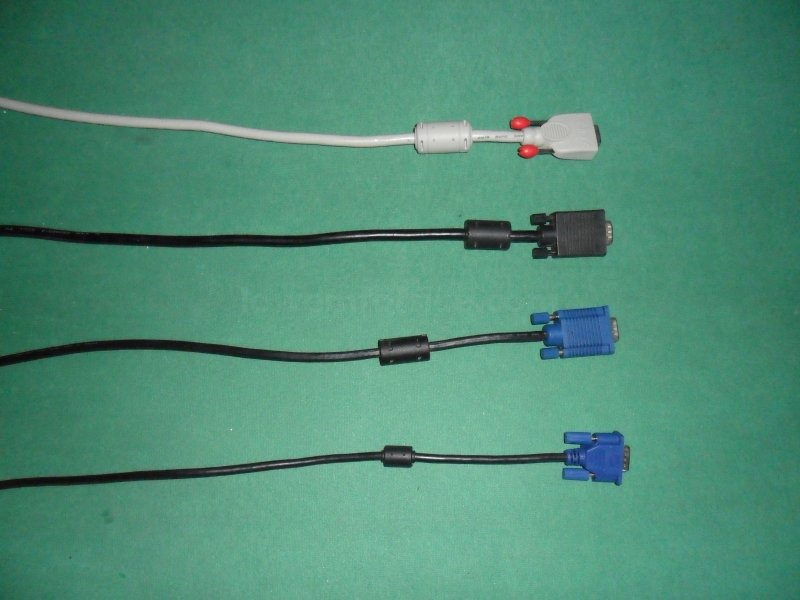Comparison of VGA cables
Most office computers still have only the VGA output and most monitors for computers have only the VGA input so the VGA cable is still used in most cases. However VGA cables can be of different quality and have different amount of electromagnetic emissions. The VGA cables that come with the commercial LCD monitor are generally the worst, they are thin which means that there is little shielding inside.

VGA cables of some years ago were a little thicker, which means that they had a thicker shielding. Actually the older VGA cables had braided tinned copper sleeve, which made them also heavier. Today's products have just a foil of metalized mylar.

We have found that the thicker VGA cables are better in terms of electromagnetic emissions. Probably they have a double or triple shielding, so the emissions of the internal wires are more attenuated, and also the shielding works as a better path to earth for the monitor.

The following photo compares several VGA cables of different thickness.

In practice the manufacturers of VGA cables use a thicker shielding only on longer cables, because a longer cable may have a lower signal-to-noise ratio, and without a thicker shield it would not work well. So the commercial cables of just 1.5 meter of length have thin shield, and to have a better VGA cable we have to move on much longer cables, that are too long for a typical office.
On the other side, if the computer is placed at several meters from the desk, or even into another room, you need a long VGA cable, and of good quality, but having such long cable on the floor, or on the walls, is another source of EM radiation.
It would be better if manufacturers of VGA cables made short cables with the best shielding, like if the cable had to be much longer, but for connecting the monitor to a computer just 1.5 - 2 meters away from it.